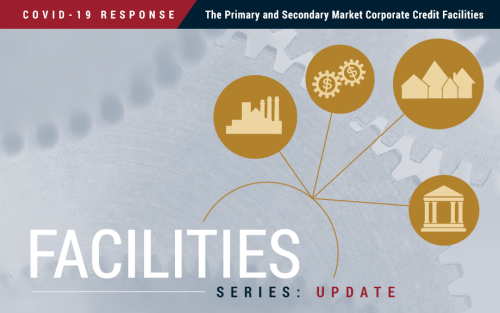Deciphering the Disinflation Process

U.S. inflation surged in the early post-COVID period, driven by several economic shocks such as supply chain disruptions and labor supply constraints. Following its peak at 6.6 percent in September 2022, core consumer price index (CPI) inflation has come down rapidly over the last two years, falling to 3.6 percent recently. What explains the rapid shifts in U.S. inflation dynamics? In a recent paper, we show that the interaction between supply chain pressures and labor market tightness amplified the inflation surge in 2021. In this post, we argue that these same forces that drove the nonlinear rise in inflation have worked in reverse since late 2022, accelerating the disinflationary process. The current episode contrasts with periods where the economy was hit by shocks to either imported inputs or to labor alone.
Global Supply Chain Pressure Index: The China Factor

In a January 2022 post, we first presented the Global Supply Chain Pressure Index (GSCPI), a parsimonious global measure designed to capture supply chain disruptions using a range of indicators. In this post, we review GSCPI readings through December 2022, and then briefly discuss the drivers of recent moves in the index. While supply chain disruptions have significantly diminished over the course of 2022, the reversion of the index toward a normal historical range has paused over the past three months. Our analysis attributes the recent pause largely to the pandemic in China amid an easing of “Zero COVID” policies.
Mortgage Rates Decline and (Prime) Households Take Advantage

Today, the New York Fed’s Center for Microeconomic Data reported that household debt balances increased by $206 billion in the fourth quarter of 2020, marking a $414 billion increase since the end of 2019. But the COVID pandemic and ensuing recession have marked an end to the dynamics in household borrowing that have characterized the expansion since the Great Recession, which included robust growth in auto and student loans, while mortgage and credit card balances grew more slowly. As the pandemic took hold, these dynamics were altered. One shift in 2020 was a larger bump up in mortgage balances. Mortgage balances grew by $182 billion, the biggest uptick since 2006, boosted by historically high volumes of originations. Here, we take a close look at the composition of mortgage originations, which neared $1.2 trillion in the fourth quarter of 2020, the highest single-quarter volume seen since our series begins in 2000. The Quarterly Report on Household Debt and Credit and this analysis are based on the New York Fed’s Consumer Credit Panel, which is itself based on anonymized Equifax credit data.
Job Seekers’ Beliefs and the Causes of Long‑Term Unemployment

In addition to its terrible human toll, the COVID-19 pandemic has also caused massive disruption in labor markets. In the United States alone, more than 25 million people lost their jobs during the first wave of the pandemic. While many have returned to work since then, a large number have remained unemployed for a prolonged period of time. The number of long-term unemployed (defined as those jobless for twenty-seven weeks or longer) has surged from 1.1 million to almost 4 million. An important concern is that the long-term unemployed face worse employment prospects, but prior work has provided no consensus on what drives this decline in employment prospects. This post discusses new findings using data on elicited beliefs of unemployed job seekers to uncover the forces driving long-term unemployment.
Discretionary and Nondiscretionary Services Expenditures during the COVID‑19 Recession

The coronavirus pandemic and the various measures to address it have led to unprecedented convulsions to the U.S. and global economies. In this post, I examine those extraordinary impacts through the lens of personal consumption expenditures on discretionary and nondiscretionary services, a framework I developed in a 2011 post (and subsequently employed in 2012, 2014, and 2017). In particular, I show that there were exceptional declines in both services categories during the spring; their recoveries, however, have displayed notably different patterns in recent months, with nondiscretionary services expenditures nearly back to their prior level and discretionary services expenditures seemingly stalled well below their pre-pandemic peak.
The Impact of the Corporate Credit Facilities

American companies have raised almost $1 trillion in the U.S. corporate bond market since March. Based on Compustat data, these companies employ more than 16 million people, and have spent more than $280 billion on capital expenditures in the first half of 2020, thereby supporting future economic activity. In this post, we document the contribution of the Primary Market and Secondary Market Corporate Credit Facilities (PMCCF and SMCCF) to bond market functioning, summarizing a detailed evaluation described in a new working paper. Improvements documented in an earlier blog post on the corporate facilities continued after the initial announcement as purchases began, and can be attributed both to the positive effects of Federal Reserve interventions generally as well as the facilities’ direct impact on eligible issuers in particular.
The Primary and Secondary Market Corporate Credit Facilities

On April 9, the Federal Reserve announced that it would take additional actions to provide up to $2.3 trillion in loans to support the economy in response to the coronavirus pandemic. Among the initiatives are the Primary Market and Secondary Market Corporate Credit Facilities (PMCCF and SMCCF), whose intent is to provide support for large U.S. businesses that typically finance themselves by issuing debt in capital markets. Corporate bonds support the operations of companies with more than 17 million employees based in the United States and these bonds are key assets for retirees and pension funds. If companies are unable to issue corporate bonds, they may be unable to invest in inventory and equipment, meet current liabilities, or pay employees. Maintaining access to credit is thus crucially important during the COVID-19 pandemic, both for issuing companies and for their employees. This post documents the dislocations in the corporate bond market that have motivated the creation of these facilities and explains how we expect these facilities to support U.S. businesses and their employees both through the COVID-related disruptions and beyond, when the economy recovers.














 RSS Feed
RSS Feed Follow Liberty Street Economics
Follow Liberty Street Economics